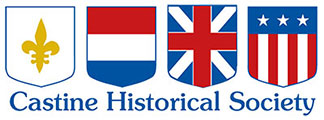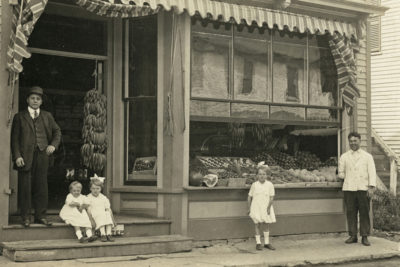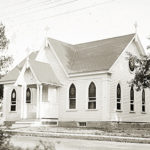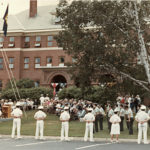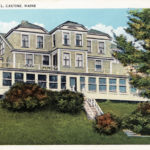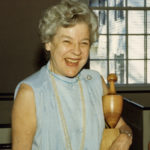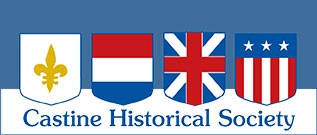The Twentieth Century and Beyond
The twentieth century began in Castine on June 26, 1901 with the opening of Emerson Hall on Court Street. It was a gift to the town by Charles Emerson in honor of his father, Henry Emerson. It has remained as Castine’s Town Hall ever since. Before the century was over, the town would celebrate its bicentennial in 1996, with a parade and series of events even more elaborate than that of a century before. The intervening years also saw changes in Castine itself, to say nothing of the nation as a whole.
The development of the internal combustion engine affected Castine’s place as an attraction for “rusticators” and others. More and more Americans traveled by automobile; fewer by railroad or steamboat. Many of the hotels of the nineteenth century closed their doors in the twentieth. At the end of the century, only three seasonal hotels remained.
In 1921 Castine’s J. Howard Wilson, a well-known geologist, established the Wilson Museum on Perkins Street, displaying a remarkable collection of geological and anthropological items collected from around the world. Over the years, while Dr. Wilson’s collection still remains, the Museum has widened its focus to include informative programs and activities relating to Maine’s social history as well.
In 1941 the Maine Maritime Academy (MMA) was established on the grounds of the Eastern Maine Normal School, which had folded the year before. In the next seventy-five years, thousands of young men and women from all over the world would come to Castine to train for the shipping industry.
The establishment of the MMA also coincided with the American entry into World War II. While about three dozen Castine citizens had served in World War I, over eighty served in World War II. All of their names, along with those who lost their lives, may be seen on commemorative stones on the Town Common and at Emerson Hall. Castine citizens also served in Korea, Viet Nam, and in subsequent conflicts. Every Memorial Day, the town holds a solemn service at the town cemetery, followed by a procession to the Common, and then to the town dock.
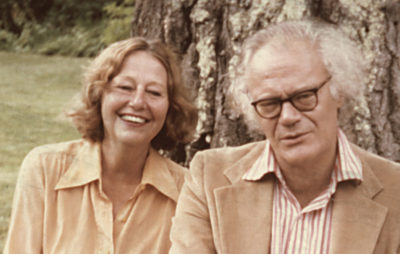 Today in Castine one can still find evidence of the town’s 400-year history. The town’s scenic and historical charm has made it attractive to artists, poets, novelists and journalists, including Robert Lowell, Elizabeth Hardwick, Mary McCarthy and Philip Booth. The cross marking the arrival of the French in the 1600s still stands. At the top of Main Street are the remnants of Fort George, witness now to picnics and softball games rather than to battle and bloodshed. Tourists may walk about the town, admire the homes along Main Street, and read the many historic signs (not all of which are strictly accurate) put up over a century ago.
Today in Castine one can still find evidence of the town’s 400-year history. The town’s scenic and historical charm has made it attractive to artists, poets, novelists and journalists, including Robert Lowell, Elizabeth Hardwick, Mary McCarthy and Philip Booth. The cross marking the arrival of the French in the 1600s still stands. At the top of Main Street are the remnants of Fort George, witness now to picnics and softball games rather than to battle and bloodshed. Tourists may walk about the town, admire the homes along Main Street, and read the many historic signs (not all of which are strictly accurate) put up over a century ago.
The bustling shipyard of the nineteenth century is long gone, but the 500 foot MMA training ship State of Maine now looks out over the harbor when it is not at sea. The harbor is home to a fleet, not of fishing vessels, but of yachts of varying sizes, the proud possession of the town’s residents and summer visitors. Not only does the town enjoy a spectacular Fourth of July fireworks display, but ten days later, on France’s Bastille Day, the “French Connection” has been observed here as well.
It is the mission of both the Castine Historical Society and the Wilson Museum to preserve and treasure the town’s past, through lectures and exhibits, as well as guided tours and archival research.
- Catholic Church
- Maine Maritime Academy
- Shetola Hotel
- Mary McCarthy
